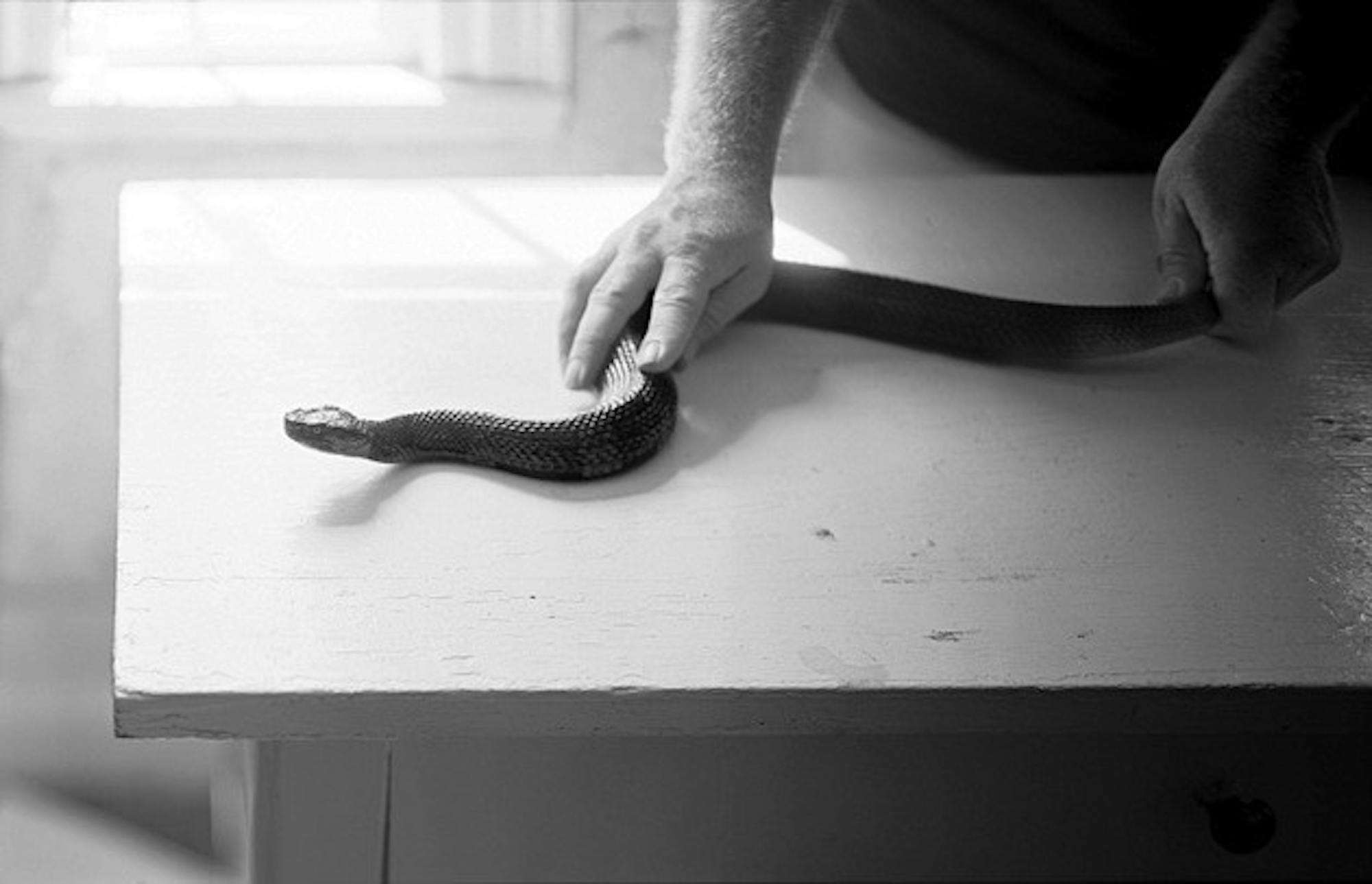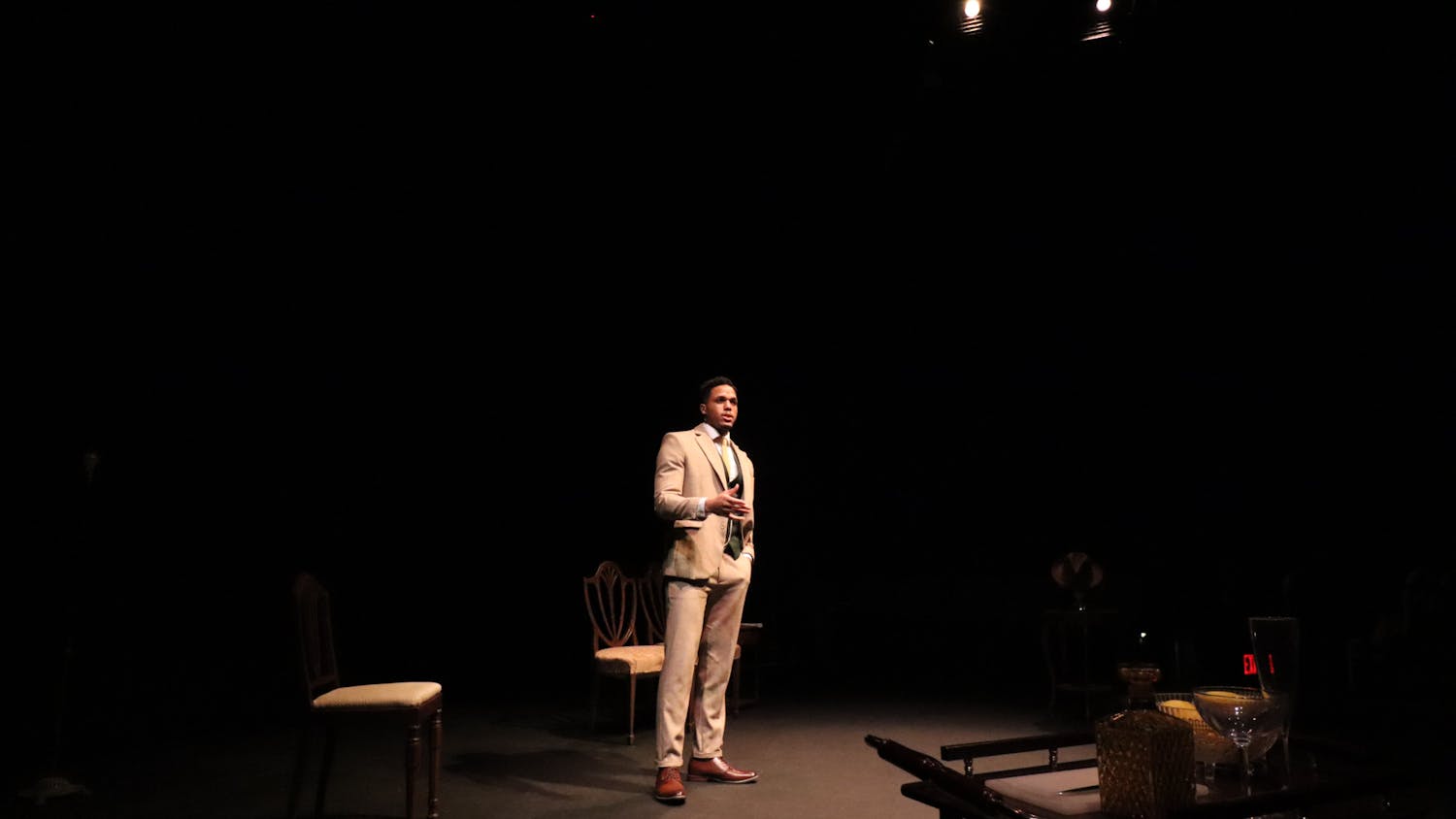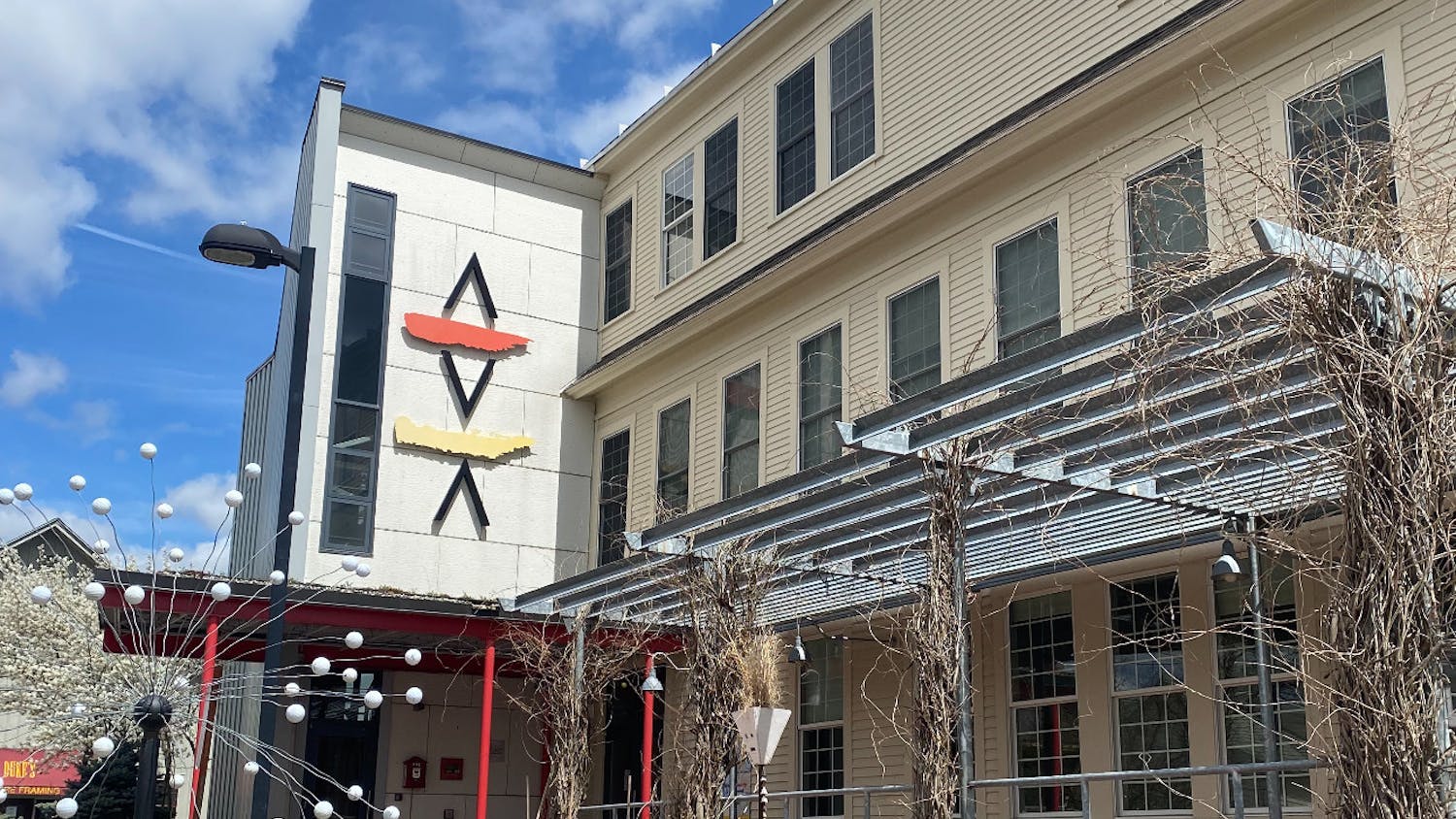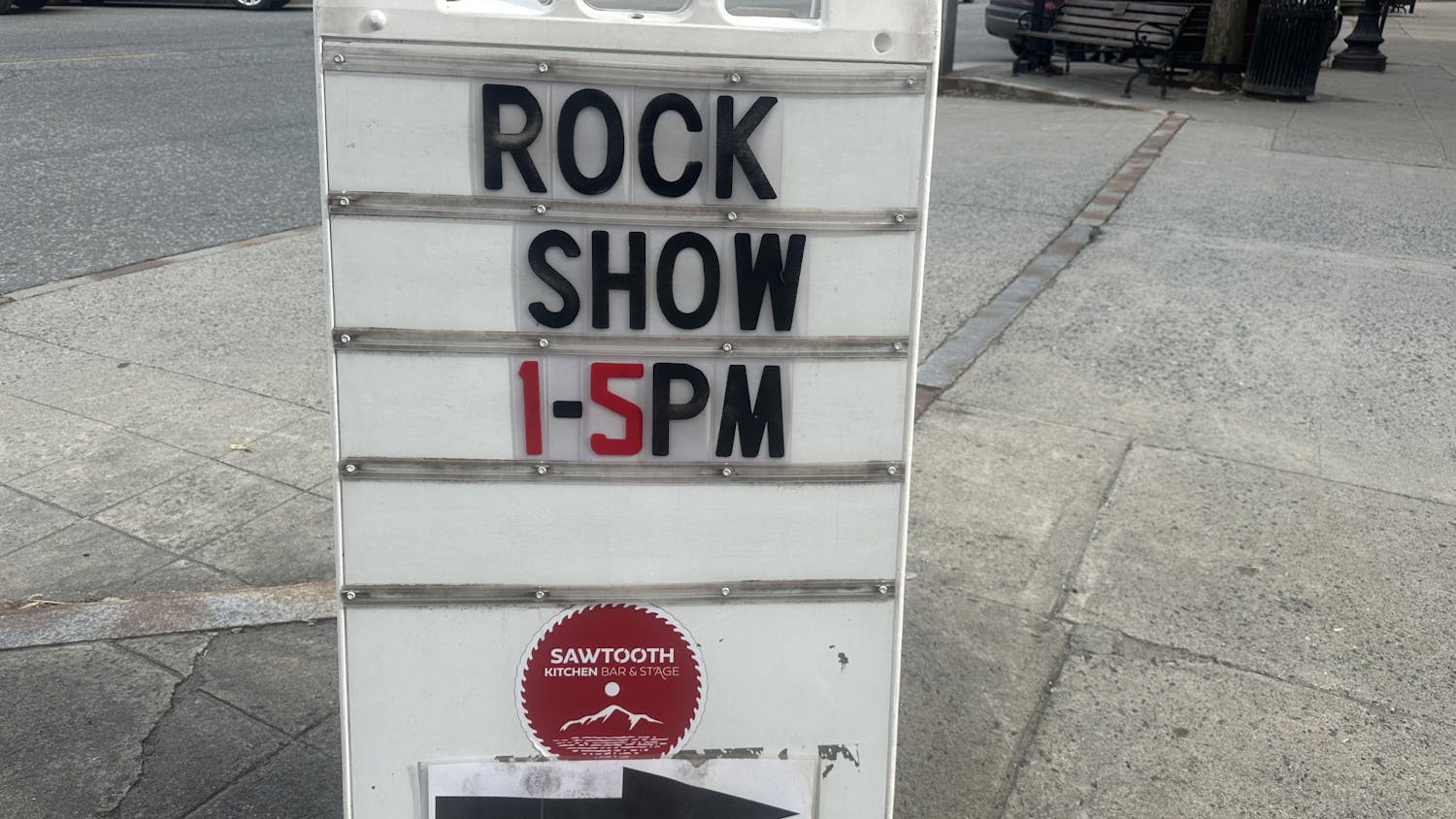"Photography is evidence of something, of something that is inherently true," Miller, also a senior lecturer in the studio art department, said in an interview with The Dartmouth.
"Cottonmouth" is a series of black-and-white photographs that documents a very deliberately composed scene between a cottonmouth water moccasin a poisonous snake and the artist. The exhibit serves as a meditation on Miller's childhood experience with snakes, intended to lead viewers to question the truths and constructed elements of their realities.
Miller was raised in a fundamentalist offshoot of the International Pentecostal Holiness Church, a movement founded in 1897 by Abner Blackmon Crumpler, a Methodist holiness evangelist. According to Miller, he was born in Greece, N.Y., and grew up attending a church that embraced speaking in tongues a common practice among Pentecostal Holiness churches as well as snake handling, a less common and more extreme ritual practiced by a small number of parishes. In snake handling, male members of the church take up venomous snakes with the belief that their piety will protect them from being bitten by the snake, which they perceive as symbolic incarnation of sin.
An understanding of Miller's religious background enables visitors at the Strauss Gallery to best appreciate his work. His photographs are both illustrative and interpretive projecting the symbolism of a snake within its religious and personal contexts, in addition to representing the literal danger the animal presents. His images are deliberately composed to reinforce this point, as he creates strong contrasts between light and dark, often by filling scenes with a brilliant white light juxtaposed with the dark scales of the snake.
As he grew older, Miller said he rejected his church's practices as "medieval," asserting that they served as a vehicle for the elder males to maintain dominance within the religion. As an artist, what Miller believed to be a ritualized "denial of reality" in the Pentecostal Holiness Church attracted him to return to the subject with a camera, he said.
It was with this fascination a simultaneous "attraction and repulsion," he said that he sought out churches across the Northeast, from Norwich, Vt., to St. Marys, Penn., to document the practice of snake handling.
While some of the photographs in the exhibition capture the snake positioned alone upon a table, many document Miller's interactions with the animal. For instance, in the largest print of the exhibition, an untitled work in which Miller kneels before a window and reaches out intently to the snake, he creates a very private scene that the viewer feels he or she has happened to walk in on. The straightforward perspective immediately entices the viewer and fills the scene with a sense of intensity and urgency that is further emphasized by Miller's skillful chiaroscuro.
According to Miller, the ultimate goal of his work is to tell a story an objective that he achieves, but only once viewers become acquainted with the context in which his images were created.
Without any knowledge of Miller's background in the fundamentalist organization the Hop does not make this information easily accessible the images serve as an enticing study of a cottonmouth snake. They simply document the animal as an object of fascination, rather than as an element within a careful composition an interpretation of the photographs supported by the occasional, arbitrary tilting of perspective throughout. Nonetheless, an understanding of Miller's background and his compositional choices gives meaning to "Cottonmouth" as an exhibition to be appreciated not solely for its illustrative qualities, but also for the carefully rendered metaphor that it presents.
Miller's exhibition opened on Sept. 28 and will remain on display through next Sunday, Oct. 24.
His work has been featured in a variety of exhibitions throughout the United States, including the Heard Museum in Phoenix, Raw & Co Gallery in Cleveland, Ohio, and The George Gustav Heye Center at the Smithsonian National Museum of the American Indian, according to the department's website.




